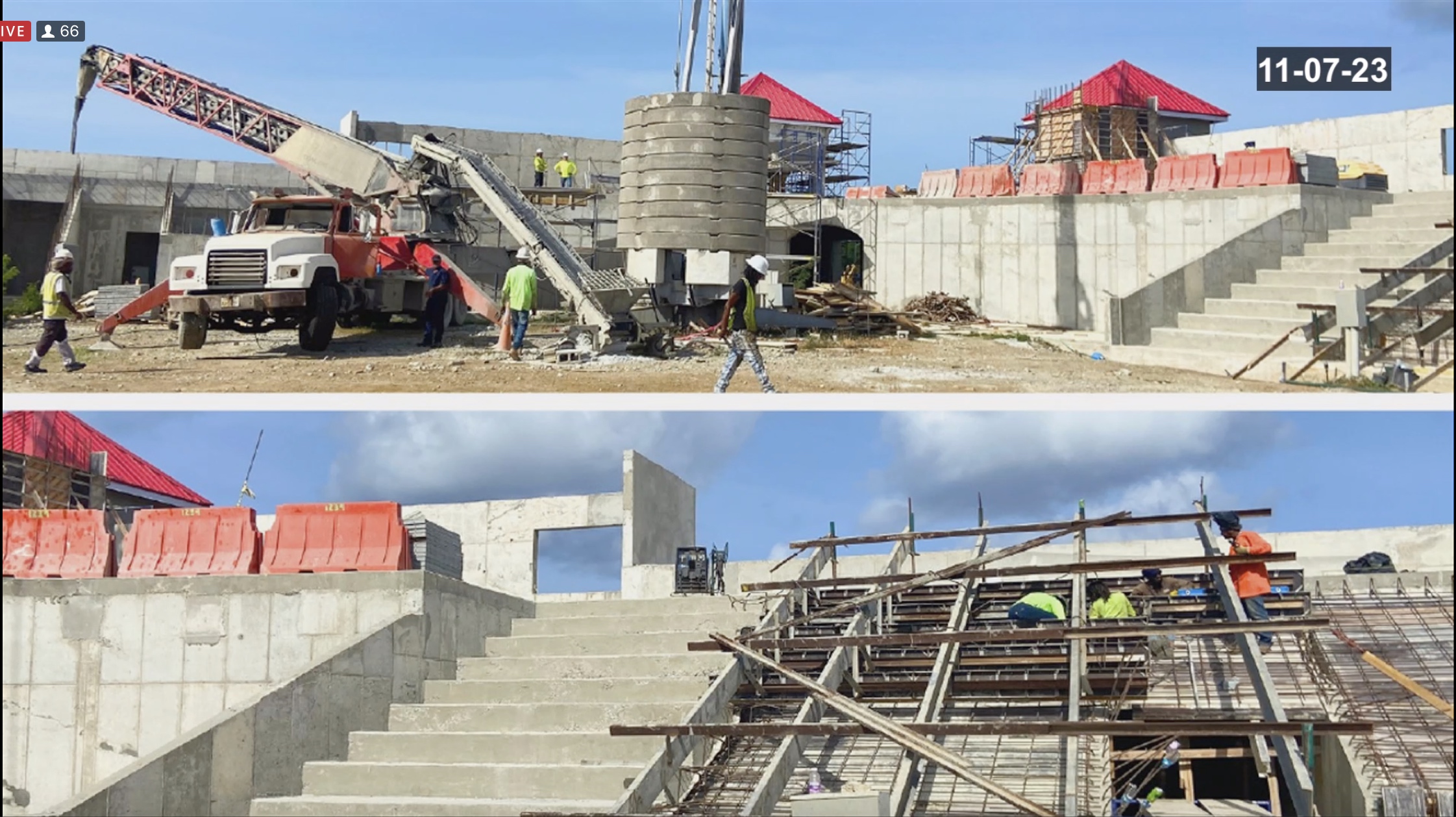
Visibly frustrated senators discussed $5.1 million for St. Croix’s Paul E. Joseph Stadium Tuesday — bringing the total government investment to $35.5 million.
Sen. Novelle Francis Jr., the funding bill’s sponsor, asked Public Works Commissioner Derek Gabriel if this was the final funding request.
Gabriel pledged it was.
“Today is Nov. 7, 2023. Mind it,” Francis said, noting Gabriel’s answer for the record. “We can’t just continue to throw money after this project. We have so much more important issues plaguing this community that have to close the door on this one and move on.”
A large part of the Committee on Budget, Appropriations, and Finance circled around potential revenue the stadium was supposed to generate, with senators asking why branding and sports tourism contracts were not in advanced stages of negotiation or even signed.
Sports Parks and Recreation Commissioner Calvert White said selling St. Croix as a destination was easy, but selling events at a non-existent, long-delayed stadium was a much more difficult affair.
“We’re talking about a project that started in 2012. When we’re having discussions with what we call destination organizations, they’re fully aware — because they do their research — on the length that this facility has been being built. For us to want someone to commit and sign an agreement to come to the territory, but let’s be honest, the timeline for this facility has been changing over the years. It’s a little far-fetched,” White said.
Verbal commitments from teams that want to come to the Virgin Islands were in place, he said. Baseball, lacrosse, and officials from other sports were interested but were doubtful as to when the stadium would be completed.
“If I’m running an event, I’m not going to commit to that. And I think that’s our challenge right now: having people say they are going to come not knowing the timeline on when the facility will be finished,” White said.
Sen. Donna Frett-Gregory and others argued a hard date should have been set with the government organizations and the project contractor.
“What is the discourse around us having that drop-dead date?” she asked.
Gabriel said the contractor, GEC, LLC, “squarely understands” the project’s importance to the territory.
“There is a strong sense of urgency to complete this project and show progress,” he said. “We’ve seen progress on this project in the past 12 months that we haven’t seen in the past five years.”
Frett-Gregory pressed that having contracts in place for the stadium to start generating revenue the moment it opened was vital.
“It’s that important to our economy and it is that important to our bottom,” Frett-Gregory said. “I’m urging the administration to take this matter very seriously; $35.5 million is nothing to bat your eye at. We need to be generating revenues once this project is complete.”
Sen. Franklin Johnson agreed the stadium was a money maker for the territory if used for annual sports tourism events. Otherwise, locally, its use would probably be limited to concerts.
“The same way you have Paradise Jam with basketball, bring them in here with the wintertime, duplicate that with baseball. Bring them in here, the top five college teams, and you got that. Bring a tournament here every year. It can’t be just for today or tomorrow. You have to be consistent.”
Baseball teams are far larger than basketball teams, meaning hotel rooms would be filled with players and coaches and training staff in addition to any family and fans that might come as well, Johnson said.
White agreed, saying teams on the U.S. mainland were eager for warm places to train over the winter.
“I have no doubt in my mind that we will be able to keep this facility filled with destination events. Teams right now are looking for places to travel. It’s cold in the states,” White said.
New camera and broadcast facilities added to the stadium plans would allow events to be shared abroad, White said.
Project manager Tawana Nicholas, Public Works’ chief engineer, said the stadium was slated for completion by the end of 2024.
The additional funding would be used to add a press box and announcer’s booth, premium behind-home-plate seating, bleacher backs, camera locations and platforms, perimeter wall and wall padding, a whole-site generator, concessions equipment, solar lighting, railing and guardrails, drainage and sewer changes, fiber optic connections, and more, Nicholas said.


